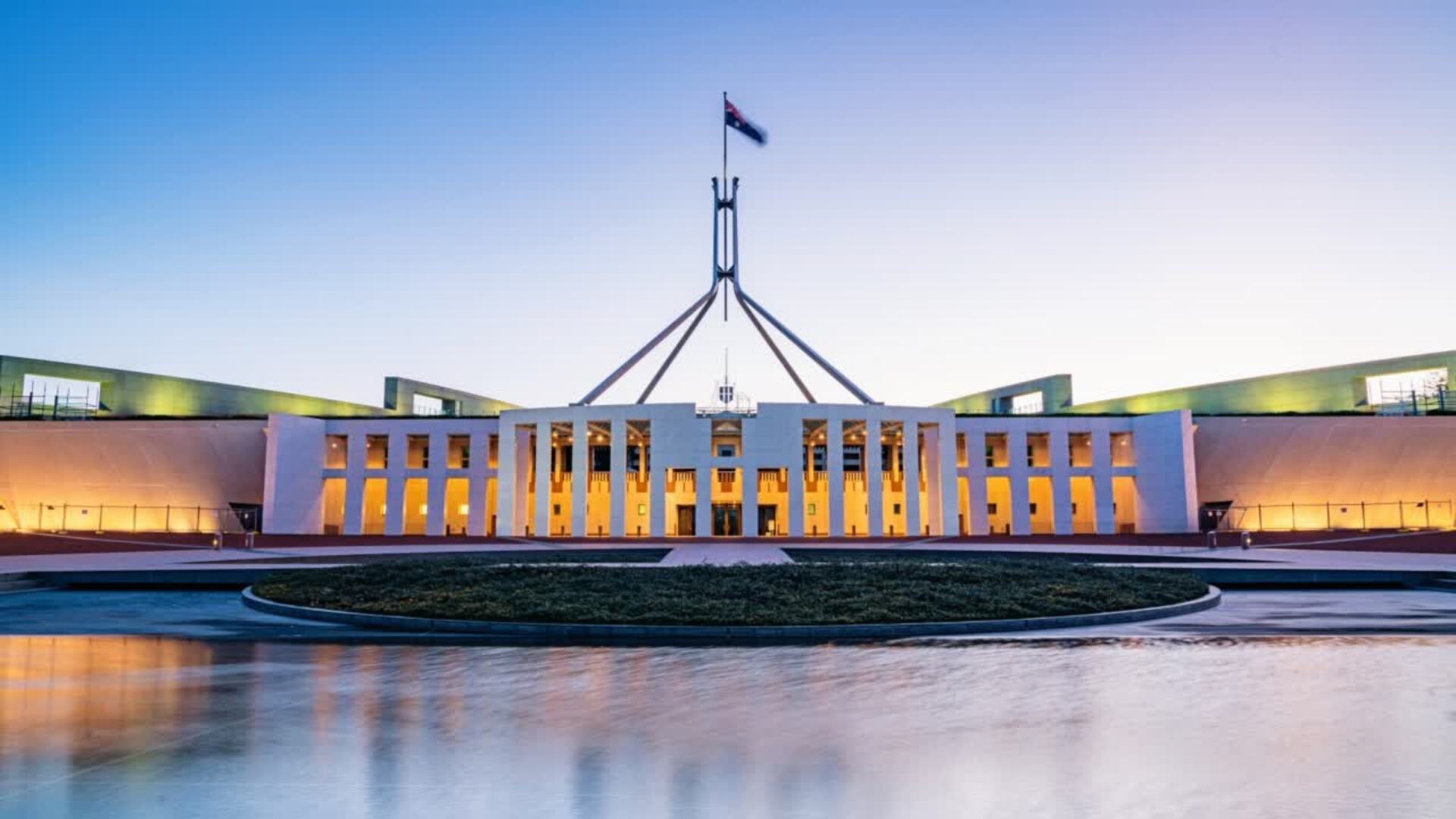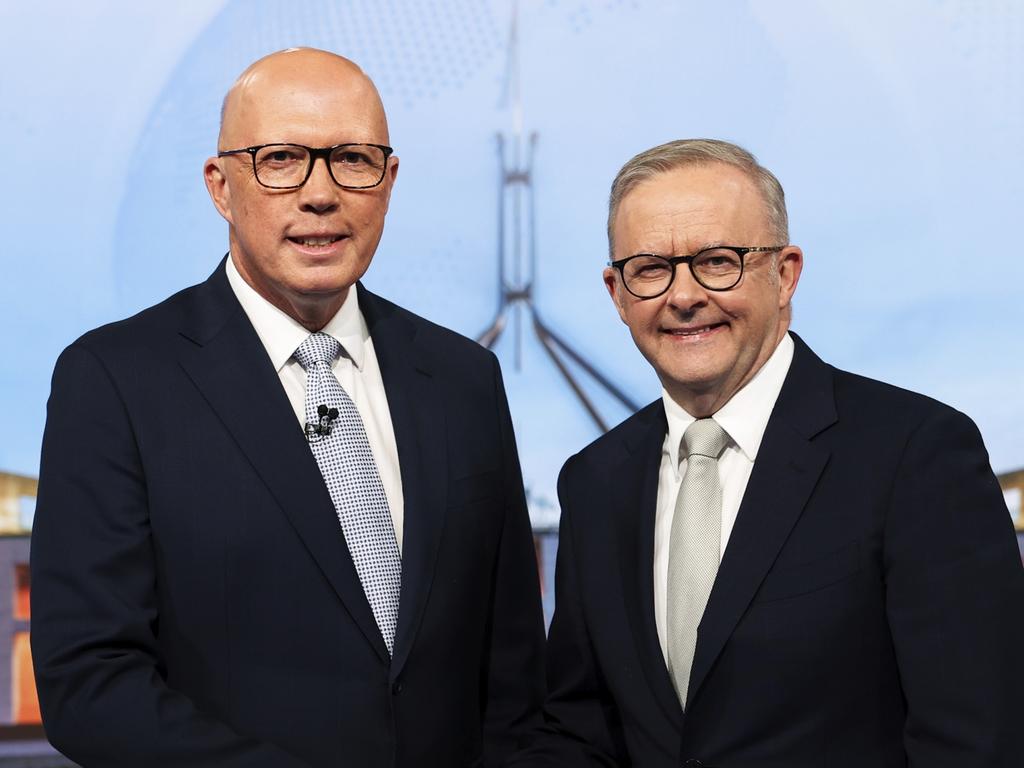Jim Chalmers stakes his future on keeping a AAA credit rating
Jim Chalmers has staked the economic credentials of a re-elected Labor government on maintaining the AAA credit rating, claiming there was ‘no reason’ it would be downgraded under his watch.

Jim Chalmers has staked the economic credentials of a re-elected Labor government on maintaining the AAA credit rating, claiming there was “no reason” it would be downgraded under his watch, despite unveiling policies over the past five months that have added a net $35bn to the nation’s credit card bill.
After Anthony Albanese lashed out at Standard and Poor’s warning that the national AAA credit rating was at risk due to the pre-election spendathon and the growth of off-budget spending, the Treasurer on Tuesday said “we respect” the global ratings agency and acknowledged “their opinions matter”.
But Dr Chalmers denied the central claim of the S&P report released on Monday that there was a risk to the AAA credit rating due to the erosion of fiscal prudence in Australia, arguing this would be the case only if Peter Dutton won the election.
The S&P report on Monday said big-spending promises by Labor and the Coalition had to be accompanied by savings and new revenue measures to avoid a blowout in budget deficits.
“There would be no reason to lose the AAA if Labor is re-elected because we’ve shown … an enthusiasm for responsible economic management,” Dr Chalmers said. “We value the AAA credit rating … and we are providing exactly the right kind of responsible economic management that the ratings agencies value.”
Despite the Albanese government’s policies over the past three years adding a net $112bn to the deficits over the forward estimates, Dr Chalmers said the ratings agencies should be assured of Labor’s fiscal responsibility by its pre-election costings showing a net $1bn improvement to the budget bottom line.
This is despite the vast bulk of Labor’s election policies being funded in the March budget, which showed new policy decisions between December and March had added a net $35bn to the deficits over the forward estimates. This was increased by $1bn a month later in the Pre-election Economic and Fiscal Outlook.
Election policies that added to debt in the budget included $17.1bn on income tax cuts, $1.8bn on electricity bill rebates, $2.6bn on household battery subsidies, $689m for cheaper medicines and funding for childcare subsidies.

There were also election policies in December’s mid-year budget update that saw the bottom line go further into the red, such as the majority of the $8.5bn on Medicare to expand bulk billing incentives and the $7.2bn upgrade of the Bruce Highway.
This does not include major off-budget measures unveiled ahead of the election – criticised as obfuscation of the fiscal position by S&P – including $16bn to wipe 20 per cent off student debts, funding to prop up the failing Whyalla steelworks and a $3bn top-up of the National Broadband Network.
Labor’s pre-election costings showed it made $6bn of new spending commitments during the campaign, offset by more than $7bn in savings through slashing the use of consultants and increasing student visa fees.
“I think the ratings agencies should be very reassured by the fact we finished this election campaign with the budget in a stronger position than when we started the election campaign,” Dr Chalmers said.
Labor is boasting of two surpluses and a “$208bn turnaround in the budget” since the 2022 election, although this was largely due to higher-than-expected commodity prices and lower-than-expected unemployment.
The Coalition is expected to release its costings on Thursday, vowing a better bottom line than Labor despite backing most of the Albanese government’s spending while making its own expensive commitments such as $16bn on temporary cuts to the fuel excise and income tax and $21bn over five years on defence.
Australian Chamber of Commerce and Industry chief executive Andrew McKellar said the warning from S&P was a “wake-up call for both major parties to rein in their spending this election”. He said budget repair needed to be a priority for whatever party won the election.
“We can’t just keep putting high spending promises on the nation’s credit card,” Mr McKellar said. “Just prior to the election being called, we urged all parties to show restraint when it comes to spending because of ballooning debt. Since then, the federal government has released its pre-election fiscal outlook showing deficits totalling over $150bn over the forward estimates and we are yet to see the final costings from the federal opposition.”
If Australia loses its AAA credit rating, it may increase interest repayments on commonwealth debt.
With Labor ramping up pressure on the Coalition to release its costings, the Opposition Leader said he would manage the budget more responsibly than the Prime Minister. “We’ve put in place supports which don’t have recurrent spend year after year,” Mr Dutton said. “We’ll always manage the economy more effectively and Labor will always spend more.
“When you do that, you drive up inflation which will drive up interest rates and interest rates will always be cheaper under a Coalition government.”
After S&P released a report on Monday warning that the erosion of Australia’s fiscal discipline was a risk to the credit rating, Mr Albanese said in a nationally televised interview: “Well, there is no suggestion frankly; the AAA credit rating is there.
“They must have been beside themselves, whoever wrote that particular report, when the Coalition left us with a $78bn deficit,” Mr Albanese told the ABC.
The S&P report says the rapid growth of off-budget spending is “increasingly obfuscating Australia’s fiscal position and borrowing needs”, and the global credit rating agency would ignore this tactic to lower headline deficits.
Economist Saul Eslake said off-budget spending – projected to be more than $100bn in the five years to 2029-30 – should be included in the deficits.
He described Mr Albanese’s claim that off-budget funds would make financial returns to the commonwealth as “bullshit”, noting this had not happened with the NBN or Snowy Hydro.
EY chief economist Cherelle Murphy said it would take a “miracle” for Dr Chalmers to turn around the trajectory of government spending.
“Getting the numbers to add up as the ALP has presented in their costings requires nothing to go wrong and the economy to behave exactly as predicted,” she said. “It also requires extraordinarily low and disciplined government spending growth over several years.
“Amid geopolitical strife, a trade war, climate change and population ageing, that could take a miracle.
“And that’s just to maintain deficits around the $30-40bn a year mark. Getting back to balance (is) at best a decade away unless we enjoy a significant positive shock.”
Judo Bank’s chief economic adviser, Warren Hogan, said Dr Chalmers was walking a dangerous path relying on too much of the good luck that has come from outside his spending and saving policy decisions.
“Now is the time for risk management, not grand spending plans,” Mr Hogan said.
“The real issue for me is we are highly exposed to a weaker revenue line from a softer labour market than projected.”
Deutsche Bank Australia chief economist Phil O’Donaghoe said the market would determine a lot about whether politicians’ spending decisions mattered.
“The quality of spending matters enormously. It’s not my place to say whether … the government spending is a good or bad thing,” Mr O’Donaghoe said.
“Childcare policy can free up a worker, and tax cuts can be temporary. If it is low quality spending and there’s a deficit, that’s probably bad and the market would respond.
“The latest S&P comments didn’t move the market.”







To join the conversation, please log in. Don't have an account? Register
Join the conversation, you are commenting as Logout